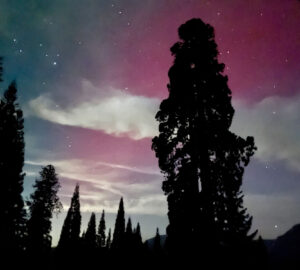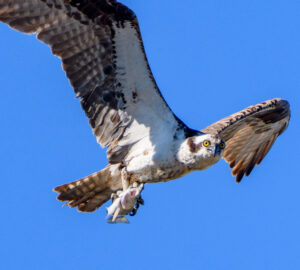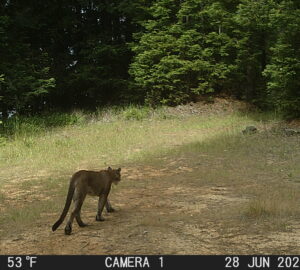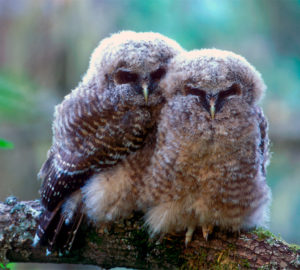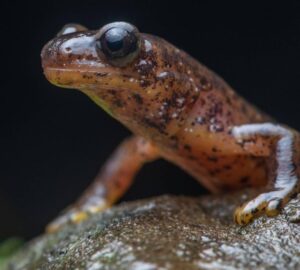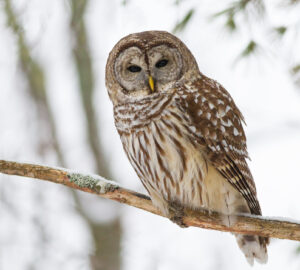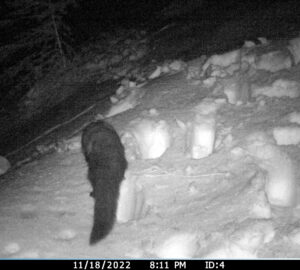Mysterious marbled murrelet nests high in the big trees
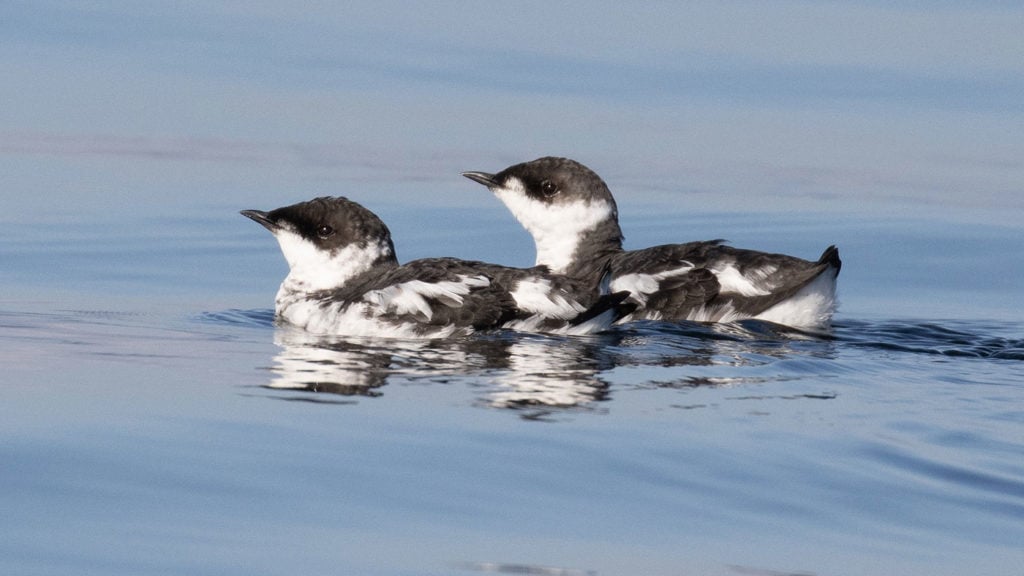
Of all the plants and animals that occupy the coast redwood ecosystem, among the more fascinating is the marbled murrelet, a brown and white seabird that’s a little bigger than a robin. This otherwise nondescript bird – called “fog larks” by early loggers – has an amazing history and continues to be a pivotal species for conservation.
For nearly 200 years, the marbled murrelet was at the center of one of the great mysteries of biological study. Now, the bird is one of just a handful of species whose protection is intertwined with the future of old-growth forests – including old-growth redwoods – along the West Coast of North America.
A riddle for 200 years
First discovered by Russian explorers in 1789, the bird became popular among naturalists in the 19th Century. The marbled murrelet was seen regularly out over the ocean, but no one knew anything about its nesting habits. No one had ever seen a chick. Famed naturalist Joseph Grinnell marveled over the birds’ speed and behavior, but could learn no more. For the next 200 years, naturalists waited by the shore, interviewed Native Americans, searched the coastlines – but to no avail.
Then, finally, in 1974, came the breakthrough. A tree-trimmer named Hoyt Foster was pruning a tall tree within Big Basin Redwoods State Park in the Santa Cruz Mountains just south of San Francisco. There, 150-feet above the ground, he came across a small nest containing a fuzzy chick. He wrapped up the bird and took it to a biologist, who quickly recognized it as a young marbled murrelet chick. Although researchers had already suspected that the seabird was nesting in forests, this physical evidence proved it. More nests were found over time, always high in old-growth forests, frequently in redwoods. Amazingly, this bird that spends almost its entire life on the ocean eating fish for survival, nests high in trees, sometimes as far as 50 miles from the water.
High in the canopy
The redwood forest that the marbled murrelet experiences is very different from the one that we experience on the forest floor. Large mats formed by decomposed leaves and twigs create large platforms that are remarkably stable, and encourage a cool moist atmosphere. A whole ecosystem of plants, insects, and wildlife thrive here – including the murrelets – which enjoy the distance from potential predators.
The marbled murrelet’s divided life over the ocean and in the forest has resulted in at least one strange adaptation. When it is out over the ocean, its coloring is very much like other marine birds, dark on top, white on the bottom. During nesting season in the forest, however, its color changes to a lighter brown to blend in with the forest canopy.
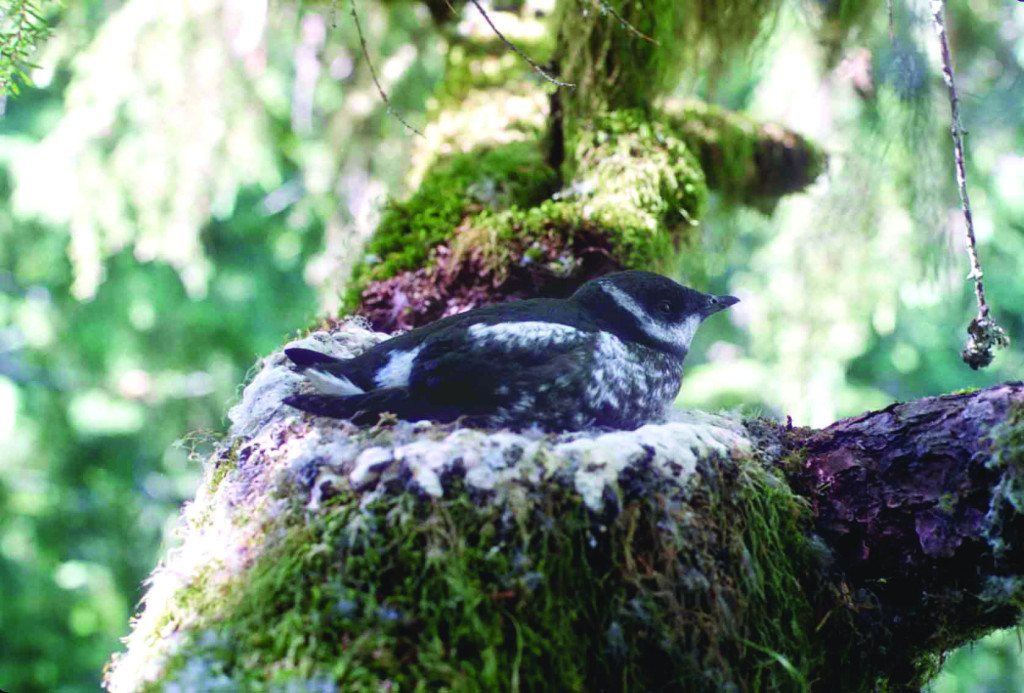
Protected status
The marbled murrelets’ nesting habits almost immediately created concern among conservationists, as much of its essential habitat had already been lost to logging, and much more was at risk. Where in the past, another bird had been at the center of forest protection in this region, the Northern Spotted Owl, the marbled murrelet quickly came to the forefront. This was especially the case after it was learned that habitat loss was quickly driving down the southern population of the birds. In 1988, the National Audubon Society successfully petitioned to list the genetically distinct southern population of the Marbled Murrelet (in California, Oregon, and Washington) as Threatened under the Endangered Species List. Both California and Oregon have protected the species under their state Endangered Species Acts.
Along with the marbled murrelet’s federal listing, a great deal of California old-growth forest including redwood forests – has subsequently been identified as critical habitat. These federal critical habitat designations have been controversial prompting a number of petitions and lawsuits over the years. As such, the footprint of the murrelet’s critical habitat designation has shrunk from its original size. Potential or occupied habitat under state designations plays into permits for both timber harvest and forest conservation.
And so, just as much as the marbled murrelet relies on the old-growth forests of the north coast for survival, in a certain way, they too rely on the bird for the same.
A different kind of threat
Unfortunately, the bird has faced a new threat in recent years, one that is particularly acute in the area where that first nest was found in 1974. While the old-growth forests of the Santa Cruz Mountains are largely protected, depredation from corvids is a serious threat to nesting success. The problem there is that trash and food left in campgrounds attract jays, ravens, and crows, which then attack the nests.
Save the Redwoods League sponsored some of the initial research on this problem. California State Parks has instituted a number of strategies to reduce this problem – when you visit the park you will encounter numerous signs alerting visitors to the danger of leaving food behind.
When you visit an old-growth coast redwood park, the chances of your seeing a marbled murrelet are remote. After all, the bird remained hidden for 200 years. But there’s a pleasure in knowing that when you’re in these special places, you may also be in the company of a secretive bird that is enjoying the environment as much as you are.

